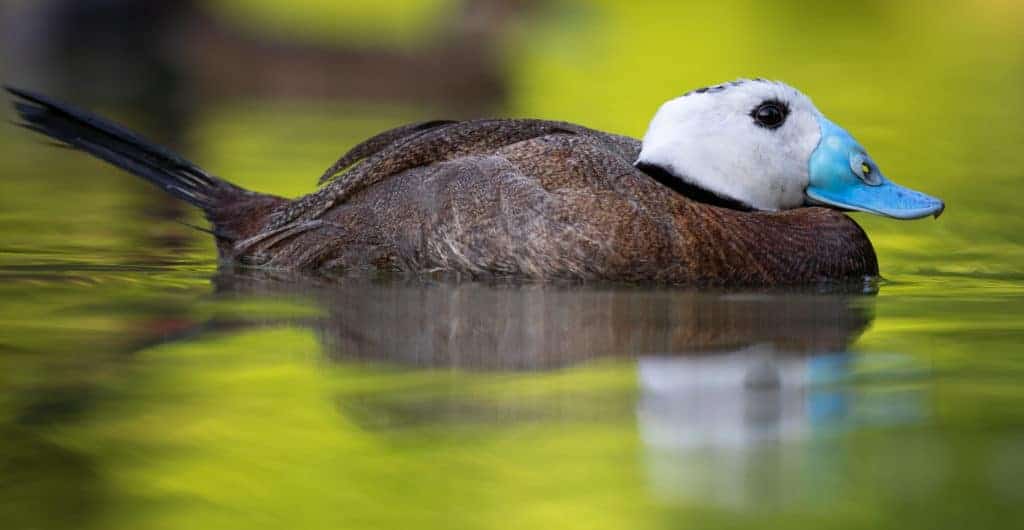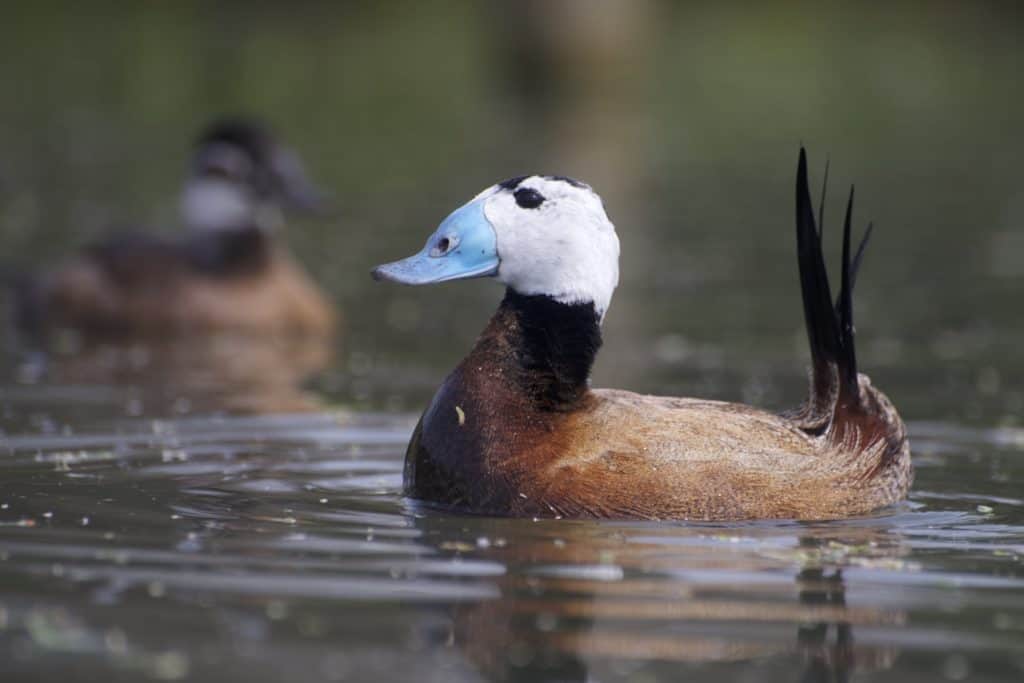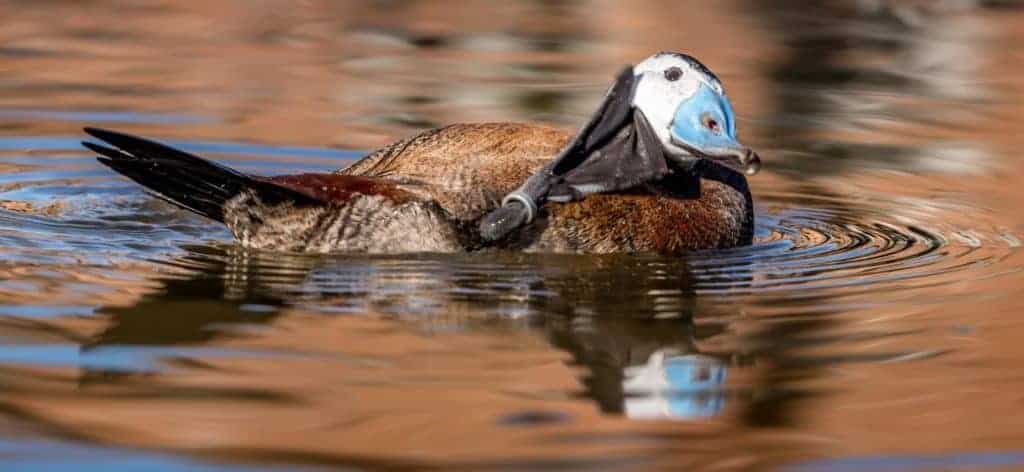White-headed Duck


The White-headed Duck is a globally threatened species with a world population of only 10,000. Around 2,500 of these are found in Spain – the population having recovered from near extinction in the 1970s. The main risk to the survival of the White-headed Duck is hybridisation with the introduced North American Ruddy Duck. Ruddy Ducks were introduced to the UK in the 1940s. They established a feral population after some escaped and this numbered 6,000 by January 2000. Around 95% of the feral European population was thought to occur in the UK and in 2005 an eradication programme commenced here. By 2016 the feral population was estimated to be down to around 100 birds. The cull was not without controversy, but the objective of this programme was to eradicate Ruddy Ducks in Europe, to ensure the continued survival of the White-headed Duck as a distinct species.
Oxyura leucocephala
This distinctive stifftail duck breeds in Spain, North Africa and Western Asia. Like all stifftails, the White-headed Duck is heavily aquatic and due to its adaptations for diving, struggles to walk on land. The plumage of the male and female is similar outside of the breeding season, an overall brown russet colour with streaks of white on the cheeks. During the breeding season the male develops larger areas of white on his head, and its beak becomes swollen at the base and turns bright blue.


The loss of wetlands and hybridisation with the introduced North America Ruddy Ducks (NARD), led to a rapid population decline and the classification of Endangered for the White-headed Duck. Efforts to eradicate NARDS as well as hybrid birds, has led to populations in Spain and North Africa stabilising.
A waterfowl oddball, with a striking nuptial plumage, personable behaviour and amazing conservation success story.
Preferring large areas of freshwater with dense vegetation, this species builds well-constructed nests from plant matter. Like other stifftails and whistling ducks, the nest is not lined with down. The female lays between 3-5 large white eggs and ferociously defends it during the entire incubation period of about 25 days.
FURTHER READING
Share this page